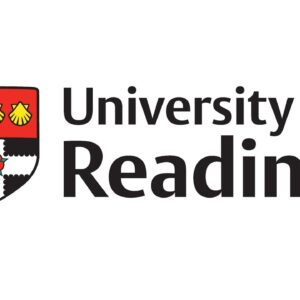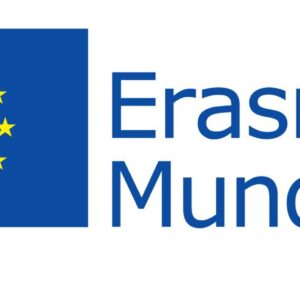Top 50 Cheapest US Universities for International Students Fall 2025 Complete Guide
Understanding US Education for International Students-Top 50 Cheapest US Universities for International Students Fall 2025
Top 50 Cheapest US Universities for International Students Fall 2025. The United States is home to some of the most prestigious universities in the world. From Ivy League schools to public universities and liberal arts colleges, international students flock to the country for its high-quality education and diverse campus environments. However, the rising costs of education, coupled with living expenses, can be daunting. This guide is designed to help international students find affordable education options for the 2025 academic year, focusing on universities with tuition fees under $15,000 per year.
Education Landscape in the US
The US education system is highly decentralized, with universities offering a wide range of programs and degrees. Public universities typically have lower tuition rates compared to private institutions, making them an attractive option for international students looking to minimize costs. Furthermore, many universities offer in-state tuition rates for international students, provided they meet certain residency requirements.
Read Also: Top 20 Study Abroad Destinations 2025
While tuition fees in the US can range from a few thousand dollars to over $50,000 per year, there are numerous affordable options that offer excellent education without the hefty price tag. According to the College Board, the average cost of tuition and fees for public colleges for the 2024–2025 academic year is around $10,000 for in-state students and $27,000 for out-of-state students. For international students, the cost may be higher, but there are still plenty of affordable institutions to choose from.
Metrics for Affordability-Top 50 Cheapest US Universities for International Students Fall 2025
When considering affordability, it’s important to take into account not just the tuition fees but also living expenses, books, health insurance, and other hidden costs. The total cost of attending a university in the US can vary significantly depending on the location, housing options, and lifestyle choices. For instance, studying in urban areas like New York or Los Angeles tends to be more expensive due to higher rent and transportation costs, whereas universities in smaller cities or rural areas may offer more affordable living options.
Another key factor to consider is the Return on Investment (ROI). This refers to the potential career outcomes and salary expectations upon graduation. While some universities may have lower tuition fees, they may not offer the same job placement rates or industry connections as more expensive institutions. As an international student, it’s crucial to choose a university that balances affordability with the potential for career advancement.
Success Rates and Quality Indicators-Top 50 Cheapest US Universities for International Students Fall 2025
International students often worry about the quality of education they will receive at affordable universities. The good news is that many of the schools listed in this guide offer rigorous academic programs, excellent faculty, and a supportive learning environment. Furthermore, many of these institutions are well-regarded for their diverse student bodies, inclusive campuses, and strong alumni networks.
Success rates for international students can also be influenced by factors like academic support services, career counseling, and internship opportunities. Schools with a strong emphasis on these areas tend to have higher retention rates and better job placement outcomes for their graduates.
State Universities Under $15,000-Top 50 Cheapest US Universities for International Students Fall 2025
For international students, state universities often provide the best balance of quality education and affordable tuition. Many of these universities are publicly funded, which helps keep costs lower. The following is a breakdown of affordable state universities in the US across different regions.
Midwest Options
- University of Wyoming (Laramie, WY)
- Tuition: $9,500
- Known for its strong engineering, agricultural, and business programs, the University of Wyoming offers an affordable option for international students. With a low cost of living in Laramie, students can save on housing and everyday expenses while receiving a solid education.
- University of North Dakota (Grand Forks, ND)
- Tuition: $12,500
- A well-regarded institution for aviation, business, and engineering, UND offers lower tuition rates and plenty of scholarship opportunities for international students. The university also boasts a wide range of student services to help with the transition to studying in the US.
- University of Missouri – St. Louis (St. Louis, MO)
- Tuition: $13,500
- UMSL is a great choice for international students interested in social sciences, humanities, and business programs. The university’s location in St. Louis offers plenty of internship and job opportunities in diverse fields.
Southern Universities
- University of Alabama (Tuscaloosa, AL)
- Tuition: $14,000
- One of the most affordable universities in the southern US, the University of Alabama offers a range of programs in business, engineering, and the arts. The university is known for its vibrant campus life and strong athletic programs, making it a popular choice for international students.
- University of Arkansas (Fayetteville, AR)
- Tuition: $13,000
- Known for its programs in business, engineering, and agriculture, the University of Arkansas provides excellent education at a reasonable cost. The university also offers numerous scholarship opportunities for international students.
- Georgia Southern University (Statesboro, GA)
- Tuition: $10,500
- This public university offers affordable tuition rates along with a strong focus on business, health sciences, and engineering programs. Georgia Southern is particularly attractive for students who want a friendly, supportive environment.
Mountain Region Schools
- University of Utah (Salt Lake City, UT)
- Tuition: $14,000
- Located in Salt Lake City, the University of Utah offers internationally recognized programs in engineering, business, and the arts. The university also provides students with access to a wealth of outdoor recreational activities, making it ideal for those who enjoy an active lifestyle.
- University of Colorado Boulder (Boulder, CO)
- Tuition: $14,500
- Known for its engineering, business, and environmental science programs, the University of Colorado Boulder offers a high-quality education in a city with a low cost of living. The university has strong research programs and a large international student community.
East Coast Choices
- University of North Carolina at Greensboro (Greensboro, NC)
- Tuition: $14,000
- A great option for students interested in liberal arts and business programs, UNC Greensboro offers affordable tuition rates and a diverse student body. The university’s low cost of living also makes it an attractive option for international students.
- University of Delaware (Newark, DE)
- Tuition: $14,500
- The University of Delaware is well-regarded for its business, engineering, and science programs. Located just outside of major cities like Philadelphia and Baltimore, students can enjoy a quiet college town with easy access to major metropolitan areas.
West Coast Possibilities
- California State University, Long Beach (Long Beach, CA)
- Tuition: $14,000
- Despite its location in California, which is known for high living costs, CSU Long Beach offers a relatively low tuition rate for international students. It’s a popular choice for students interested in engineering, business, and arts programs.
- University of Washington Tacoma (Tacoma, WA)
- Tuition: $13,000
- This branch of the University of Washington offers affordable tuition while still providing access to the university’s extensive resources. Tacoma itself is an affordable city compared to Seattle, making it a great option for budget-conscious international students.

Your complete guide to affordable US education – Quality degrees without breaking the bank!
Acceptance Rates
Acceptance rates are an important factor when considering universities in the US. Public universities often have higher acceptance rates compared to private institutions, but they also have specific admission criteria for international students. When applying, international students need to demonstrate strong academic records, proficiency in English, and financial stability to secure their place in the institution.
Many universities offer rolling admissions, which means students can apply throughout the year, but it’s still important to apply early to ensure that they are considered for scholarships and other funding opportunities. Understanding the university’s acceptance rate can help international students determine their chances of being admitted.
Community College Transfer Path-Top 50 Cheapest US Universities for International Students Fall 2025
2+2 Programs
Community colleges in the US offer a cost-effective path to a four-year degree. Students can complete their first two years of education at a community college and then transfer to a four-year university to complete their degree. This “2+2” model can save students thousands of dollars in tuition fees.
Transfer Agreements
Many universities have formal agreements with community colleges, known as transfer pathways or articulation agreements, which guarantee that credits earned at a community college will transfer seamlessly to a four-year university. These agreements make the transfer process much smoother and ensure that students don’t lose time or money during their education.
Cost Savings
The cost of attending a community college is generally much lower than attending a four-year university, which means that students can save a significant amount of money. For international students, this is an excellent way to reduce overall education expenses while still earning a degree from a prestigious university.
Hidden Gem Universities
There are many lesser-known universities in the US that offer exceptional education at a fraction of the cost of more famous institutions. These universities often provide smaller class sizes, personalized attention, and strong academic programs. They may not have the same name recognition as Ivy League schools, but their graduates go on to successful careers in a variety of fields. Examples of hidden gem universities include the University of Minnesota Morris, New Mexico State University, and Eastern Washington University.
Cost Breakdown Analysis-Top 50 Cheapest US Universities for International Students Fall 2025
Tuition Structure
Tuition at US universities can vary depending on the state, type of institution, and program of study. Public universities tend to have lower tuition rates compared to private institutions, but international students often pay higher fees than domestic students. On average, tuition for international students ranges from $10,000 to $30,000 per year, with some universities offering discounts or scholarships.
Living Expenses
Living expenses, including housing, food, and transportation, can add a significant amount to the overall cost of attending university. The cost of living is highest in major cities like New York, Los Angeles, and San Francisco, while smaller towns and cities tend to be more affordable.
This guide continues with details on financial aid options, scholarship opportunities, and application processes that further assist international students in navigating the complexities of US higher education without breaking the bank.
State Universities Under $15,000-Top 50 Cheapest US Universities for International Students Fall 2025
Midwest Options
- University of Kansas (Lawrence, KS)
- Tuition: $14,000
- The University of Kansas offers affordable programs in business, engineering, and health sciences. Lawrence is a charming college town with a low cost of living, making it a good choice for international students.
- University of Nebraska–Lincoln (Lincoln, NE)
- Tuition: $14,000
- Known for its programs in business, engineering, and agriculture, the University of Nebraska–Lincoln offers a strong educational experience at an affordable price. Lincoln is a city with a low cost of living, helping students save on expenses.
Southern Universities (Continued)-Top 50 Cheapest US Universities for International Students Fall 2025
- University of Tennessee, Knoxville (Knoxville, TN)
- Tuition: $14,000
- The University of Tennessee offers a range of undergraduate programs with affordable tuition rates for international students. Knoxville’s low cost of living and rich cultural heritage make it an attractive choice for students.
- University of Louisiana at Lafayette (Lafayette, LA)
- Tuition: $13,500
- Offering a variety of programs in business, engineering, and the sciences, the University of Louisiana at Lafayette is an affordable option for international students seeking quality education in the southern US. The cost of living in Lafayette is also relatively low.
- Texas A&M University-Commerce (Commerce, TX)
- Tuition: $13,000
- Texas A&M University-Commerce offers affordable tuition rates and strong academic programs in fields such as business, education, and engineering. The university is located in a small, affordable town, making it an excellent choice for budget-conscious students.
- University of Memphis (Memphis, TN)
- Tuition: $14,200
- A diverse and inclusive university, the University of Memphis offers affordable tuition rates and a variety of academic programs, including strong business and healthcare programs. Memphis itself has a relatively low cost of living.
Mountain Region Schools (Continued)
- Boise State University (Boise, ID)
- Tuition: $14,000
- Boise State offers a range of undergraduate programs in business, engineering, and health sciences, with affordable tuition for international students. Boise, known for its outdoor recreation opportunities, also has a low cost of living compared to other US cities.
- Montana State University (Bozeman, MT)
- Tuition: $13,500
- Montana State University is renowned for its programs in engineering, business, and environmental science. Bozeman, located in the Rocky Mountains, provides students with an affordable cost of living and stunning natural surroundings.
East Coast Choices (Continued)-Top 50 Cheapest US Universities for International Students Fall 2025
- University of Rhode Island (Kingston, RI)
- Tuition: $14,000
- A respected institution offering strong programs in marine biology, business, and engineering, the University of Rhode Island is an affordable option on the East Coast. The university’s location also allows easy access to major cities like Boston and New York.
- University of Maine (Orono, ME)
- Tuition: $13,000
- The University of Maine offers a great deal for international students, with excellent programs in engineering, business, and environmental science. Orono is a quiet, affordable town that provides a close-knit campus community.
- SUNY College at Cortland (Cortland, NY)
- Tuition: $14,000
- Part of the State University of New York (SUNY) system, Cortland offers affordable tuition rates and a wide array of academic programs. The university is known for its strong liberal arts and education programs.
- University of Massachusetts Dartmouth (Dartmouth, MA)
- Tuition: $14,500
- A public university with a focus on business, engineering, and arts programs, UMass Dartmouth offers a competitive education at an affordable price. Located in a region with a moderate cost of living, this university is a great choice for international students.
West Coast Possibilities (Continued)-Top 50 Cheapest US Universities for International Students Fall 2025
- San Francisco State University (San Francisco, CA)
- Tuition: $14,000
- While San Francisco is a high-cost city, San Francisco State University remains one of the more affordable options for international students. With strong programs in business, arts, and media, this university is ideal for students seeking an urban environment.
- University of Oregon (Eugene, OR)
- Tuition: $14,500
- Known for its programs in business, environmental science, and journalism, the University of Oregon provides a top-notch education at an affordable rate. Eugene is a small city with a lower cost of living compared to larger urban centers.
- California State University, Sacramento (Sacramento, CA)
- Tuition: $14,000
- CSU Sacramento offers affordable tuition and a wide range of undergraduate programs, including strong offerings in business, social sciences, and health sciences. Sacramento is an affordable city in comparison to other major cities in California.
- University of Arizona (Tucson, AZ)
- Tuition: $14,300
- The University of Arizona is a major public research university known for its programs in astronomy, engineering, and business. Tucson’s cost of living is lower than that of many other US cities, helping students save on expenses.
Additional Affordable Options-Top 50 Cheapest US Universities for International Students Fall 2025
-
University of Alabama at Birmingham (Birmingham, AL)
- Tuition: $14,000
- Known for its programs in health sciences, business, and engineering, UAB offers affordable tuition rates and a vibrant campus life in a city that provides low living costs.
-
University of South Dakota (Vermillion, SD)
- Tuition: $12,500
- The University of South Dakota offers affordable tuition and strong academic programs in fields such as business, law, and healthcare. Located in a smaller city, the cost of living is very low.
-
Florida Gulf Coast University (Fort Myers, FL)
- Tuition: $14,000
- Offering a variety of programs in business, health sciences, and environmental studies, Florida Gulf Coast University provides an affordable education in a sunny and accessible part of Florida.
-
University of North Dakota (Grand Forks, ND)
- Tuition: $13,500
- Known for its strong programs in aviation, business, and engineering, UND offers an affordable education with a strong support system for international students.
-
Western Kentucky University (Bowling Green, KY)
- Tuition: $13,800
- WKU is a great option for international students who are interested in programs such as business, education, and the arts, with low tuition and an affordable cost of living.
-
University of West Georgia (Carrollton, GA)
- Tuition: $13,000
- The University of West Georgia offers a range of undergraduate and graduate programs, with low tuition and a friendly environment for international students.
-
University of Central Arkansas (Conway, AR)
- Tuition: $14,000
- The University of Central Arkansas provides affordable tuition and strong academic programs in business, education, and health sciences. Conway is a small, low-cost city that’s ideal for students on a budget.
-
University of Florida (Gainesville, FL)
- Tuition: $14,000
- While UF is a large and well-known institution, it maintains relatively low tuition fees compared to other major public universities. The university offers strong programs across a variety of disciplines, from business to health sciences.
-
University of Oklahoma (Norman, OK)
- Tuition: $14,500
- With its competitive programs in business, engineering, and arts, the University of Oklahoma is a great choice for international students seeking affordable higher education in a welcoming environment.
-
University of Kansas (Lawrence, KS)
- Tuition: $14,500
- The University of Kansas offers competitive tuition rates and a diverse range of academic programs, from business to engineering, in a low-cost city for students.
-
University of Wisconsin-Madison (Madison, WI)
- Tuition: $14,000
- Offering excellent programs in engineering, business, and liberal arts, the University of Wisconsin-Madison is known for its high academic standards and affordable tuition.
-
Northern Illinois University (DeKalb, IL)
- Tuition: $13,500
- With strong programs in business, education, and engineering, Northern Illinois University offers great value for international students.
-
University of Illinois at Springfield (Springfield, IL)
- Tuition: $13,000
- Known for its affordable tuition rates and strong public service and liberal arts programs, UIS is a great option for international students looking to study in Illinois.
-
University of Texas at El Paso (El Paso, TX)-Top 50 Cheapest US Universities for International Students Fall 2025
- Tuition: $14,000
- Located along the US-Mexico border, UTEP offers affordable tuition and a strong selection of academic programs, especially in engineering and business fields.
-
University of Michigan-Flint (Flint, MI)-Top 50 Cheapest US Universities for International Students Fall 2025
- Tuition: $14,000
- A public institution with affordable tuition rates and strong programs in health sciences, business, and social work, the University of Michigan-Flint provides a great value for international students.
- University of Arkansas at Little Rock (Little Rock, AR)-Top 50 Cheapest US Universities for International Students Fall 2025
- Tuition: $13,500
- With strong programs in business, law, and public administration, the University of Arkansas at Little Rock is an affordable option for international students. Little Rock is a small city with low living expenses.
-
Western Carolina University (Cullowhee, NC)-Top 50 Cheapest US Universities for International Students Fall 2025
- Tuition: $14,000
- Western Carolina offers a range of academic programs with a focus on business, education, and health sciences. The university’s location in the Appalachian Mountains provides a scenic, affordable environment for students.
-
University of New Mexico (Albuquerque, NM)-Top 50 Cheapest US Universities for International Students Fall 2025
- Tuition: $14,000
- With programs in business, arts, and engineering, the University of New Mexico is an affordable option for international students. Albuquerque’s lower cost of living makes it an even more attractive choice.
-
University of Tennessee at Chattanooga (Chattanooga, TN)-Top 50 Cheapest US Universities for International Students Fall 2025
- Tuition: $13,500
- Offering strong academic programs in business, health sciences, and engineering, UTC is a great value for international students. Chattanooga is a small city with a relatively low cost of living.
-
University of Wisconsin-Green Bay (Green Bay, WI)-Top 50 Cheapest US Universities for International Students Fall 2025
- Tuition: $13,000
- Green Bay offers affordable tuition rates and a range of undergraduate and graduate programs. The city’s low living costs make it a great destination for budget-conscious international students.
-
University of California, Riverside (Riverside, CA)-Top 50 Cheapest US Universities for International Students Fall 2025
- Tuition: $14,500
- UC Riverside provides affordable tuition in California and offers strong programs in engineering, business, and arts. Riverside is a more affordable city than Los Angeles or San Francisco, making it an ideal location for students.
-
Wayne State University (Detroit, MI)-Top 50 Cheapest US Universities for International Students Fall 2025
- Tuition: $14,000
- Wayne State offers a diverse range of programs in health sciences, engineering, and the arts, with affordable tuition rates for international students. Detroit offers a mix of urban opportunities and relatively low living costs compared to other major US cities.
Conclusion-Top 50 Cheapest US Universities for International Students Fall 2025
These 50 universities offer a wide array of affordable options for international students planning to study in the US. By considering factors such as tuition fees, living costs, and available scholarships, international students can make informed decisions about where to pursue their education without breaking the bank. While studying in the US can be expensive, there are plenty of options to help students achieve their academic and professional goals in an affordable and supportive environment.
Frequently Asked Questions-Top 50 Cheapest US Universities for International Students Fall 2025
1. What are the lowest tuition rates for international students in the US?
The lowest tuition rates for international students are typically found at state universities, particularly those located in less urbanized areas. These universities often offer tuition under $15,000 annually. Examples of affordable institutions include the University of Wyoming, the University of North Dakota, and the University of Arkansas. Some universities even offer reduced tuition through community college transfer programs, allowing students to complete their first two years of study at a community college before transferring to a four-year institution. To find the most affordable universities, you can use a tuition calculator or research specific universities on their official websites.
2. What are some hidden costs when studying in the US?
While tuition is the most significant cost, hidden costs can include:
- Health insurance: Many universities require international students to purchase their health insurance plans.
- Books and supplies: Textbooks can be expensive, often ranging from $500 to $1,000 per semester.
- Transportation: Depending on the location of the university, transportation costs for public transit or owning a car can add up.
- Social activities: Many students participate in extracurricular activities that come with additional fees.
- International calling and internet services: Staying in touch with family can be costly, especially when using international calling services. For more information, universities often provide detailed cost breakdowns on their official websites.
3. What are the scholarship chances for international students?
Scholarships for international students are available from both universities and external organizations. Many universities offer merit-based scholarships, financial aid, or specific awards for international students. For instance, the University of Illinois at Urbana-Champaign offers international students scholarships, as does the University of Southern California. Additionally, there are several global scholarship databases like Scholarships.com and EducationUSA that list scholarships available to international students.
4. What are the work rights for international students in the US?
International students on an F-1 visa are allowed to work part-time on campus up to 20 hours per week during the academic year and full-time during breaks. After completing one year of study, students may also be eligible for Optional Practical Training (OPT), allowing them to work in the US in their field of study for up to 12 months (or up to 36 months for STEM fields). Furthermore, Curricular Practical Training (CPT) permits students to engage in internships related to their major while still enrolled. For more detailed information, check the USCIS website.
5. What are the living expenses for international students in the US?
Living expenses depend on the location of the university. Major cities like New York, Los Angeles, and San Francisco tend to have higher living costs, particularly for housing. In contrast, cities in the Midwest or South often have lower costs of living. On average, students may spend between $10,000 to $20,000 annually on living expenses, which includes rent, food, transportation, and entertainment. Many universities offer cost estimators on their websites to help students budget accordingly. You can also use Niche’s cost of living calculators to compare cities.
6. What are the admission requirements for international students?
Admission requirements for international students vary by university but generally include:
- Application form: Typically available on the university’s admissions portal.
- Proof of high school completion: This can be through transcripts or certificates.
- English proficiency test scores: Most universities require TOEFL, IELTS, or another English proficiency test.
- Standardized test scores: Some universities may require SAT or ACT scores, but many schools are becoming test-optional.
- Letters of recommendation: Most programs require at least two academic recommendations.
- Statement of purpose: This personal essay highlights your academic goals and career aspirations.
- Financial proof: Students need to demonstrate they can support their education and living expenses while in the US. For details, visit each university’s admissions page.
7. What is the visa process for international students?
International students typically apply for an F-1 student visa. The process involves several steps:
- Admission: You must be accepted by a US university that is authorized to issue the I-20 form.
- I-20 Form: After receiving the I-20 form from your school, you can apply for the F-1 visa at the US embassy or consulate in your home country.
- Visa Interview: Attend a visa interview where you will need to provide documents, including proof of financial support.
- Approval: If approved, the US embassy will stamp your passport with the F-1 visa, allowing you to travel to the US. You can find detailed instructions on the U.S. Department of State’s website.
8. Do I need bank statements for a student visa?
Yes, to secure an F-1 student visa, you must provide proof of sufficient financial resources to cover your tuition, living expenses, and other costs while studying in the US. This usually includes a bank statement or affidavit of support from a sponsor. The amount required can vary depending on the university but typically includes tuition fees and living expenses for at least one year. Visit your university’s international student office for specific requirements.
9. What are the housing options for international students?
International students have several housing options, including:
- On-campus housing: Many universities offer dormitories or student apartments. This is a convenient option but may be more expensive than off-campus living.
- Off-campus housing: Renting an apartment or sharing housing with others is a more affordable option. Websites like Craigslist or Roomster can help you find available accommodations.
- Homestay: Some students choose to live with a host family for cultural exchange and more affordable living arrangements.

Your complete guide to affordable US education – Quality degrees without breaking the bank!
10. Can international students work part-time in the US?
Yes, international students on an F-1 visa are allowed to work part-time on campus during the academic year (up to 20 hours per week) and full-time during university breaks. Additionally, students can seek employment through OPT or CPT programs, which are linked to their field of study. Find more information about working while studying on the US Department of Labor website.
11. Do I need health insurance as an international student?
Yes, most universities in the US require international students to have health insurance. Many schools provide their own insurance plans, which students must purchase unless they can prove equivalent coverage through their home country’s insurance or other providers. The ACA website offers further details about insurance options for international students.
12. Can I transfer my credits from another university?
Yes, many US universities allow international students to transfer credits from previous institutions. However, the acceptance of transfer credits is subject to the university’s evaluation of the course content and compatibility with its own programs. It’s important to check with the university’s admissions office and academic advisors to understand their specific transfer credit policies. You can also review Transfer Student Guides.
13. What happens if I want to change my program after admission?
Changing your program after admission is possible, but it depends on the university’s policies and the availability of space in the new program. Some universities may allow you to change your major or program after meeting specific academic requirements, while others may require you to apply separately. Always consult your academic advisor or the admissions office for guidance on changing your program.
14. Can my family visit me while I study in the US?
Yes, your family can visit you in the US on a tourist visa (B-2 visa). They must apply for the visa and prove they will return to their home country after visiting. While on a tourist visa, they are not allowed to work or study. More details on how to apply for a B-2 visa can be found on the U.S. Department of State website.
15. What are the post-study options for international students in the US?-Top 50 Cheapest US Universities for International Students Fall 2025
After graduation, international students have several post-study options:
- Optional Practical Training (OPT): Allows students to work in the US for up to 12 months (or 36 months for STEM graduates) in a job related to their field of study.
- H-1B Visa: This visa allows employers to hire international students in specialty occupations for up to three years, with the possibility of extension.
- Return to Home Country: Some students return to their home countries and utilize their US education for career advancement.






